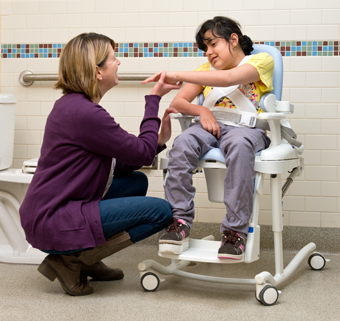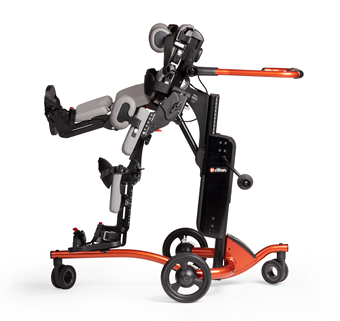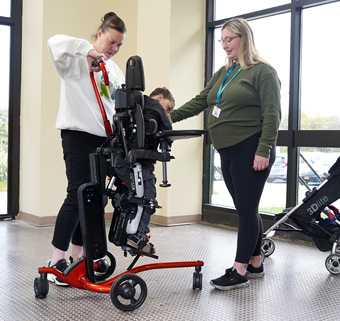Evidence Update: Safe Patient Handling
| June 2014 As therapists working in acute care and rehab well know, safe patient handling (SPH) is becoming a widely accepted discipline. Advocating the use of lifts and additional equipment for patient transfers and gait training routines, the safe patient handling movement seeks to eliminate all unnecessary manual handling of patients. This is because statistics have clearly shown that work-related musculoskeletal disorders resulting from manual patient lifts and transfers are unfortunately common in the healthcare field, often resulting in costly workers’ comp claims, lost work time or practitioners leaving the profession altogether. But the SPH movement is certainly changing this picture, reducing injuries and improving patient care.
As therapists working in acute care and rehab well know, safe patient handling (SPH) is becoming a widely accepted discipline. Advocating the use of lifts and additional equipment for patient transfers and gait training routines, the safe patient handling movement seeks to eliminate all unnecessary manual handling of patients. This is because statistics have clearly shown that work-related musculoskeletal disorders resulting from manual patient lifts and transfers are unfortunately common in the healthcare field, often resulting in costly workers’ comp claims, lost work time or practitioners leaving the profession altogether. But the SPH movement is certainly changing this picture, reducing injuries and improving patient care.
This development has been highlighted in a recent article in the Physical Therapy Journal exploring the perceptions and practices among acute care physical therapists towards safe patient handling. Therapists working in the acute care setting were chosen for this interview/survey as this practice area is particularly focused on mobilizing and transferring dependent and fragile patients. Those conducting the survey were interested in the following questions:
- Why do acute care therapists use SPH equipment and practices and what limits their use?
- Who trains acute care physical therapists in the use of SPH equipment and practices?
- Which types of SPH equipment are used by acute care physical therapists, and during which interventions are they used?
- What are acute care physical therapists’ perceptions regarding the use of SPH equipment and practices?
Below is a summary of the responses:
Ninety-one percent reported using SPH equipment and practices in their work. The majority of these respondents reported using SPH equipment to improve patient and caregiver safety, improve quality of care and facilitate patient mobilization. However, a minority felt that SPH equipment reduced active patient participation and the ability of the therapist to provide training. Interestingly enough, the most frequently reported factor that limited the use and implementation of SPH was lack of equipment.
Training in appropriate use of SPH equipment and practices was received primarily through the facility or employer, and those therapists working in facilities with formal SPH programs were more likely to feel confident in their use of the equipment and to improvise with the equipment to solve even the toughest patient handling challenges. A minority of acute care therapists received training in SPH techniques from PT school, continuing education programs or the equipment manufacturers themselves. More often than not, acute care therapists go on to educate and train other healthcare providers in SPH and have a role in evaluating equipment and developing SPH policies at their facilities.
Acute care therapists responded that they use SPH equipment primarily for transfer training, bed-mobility training and gait training and mostly use equipment such as sit-to-stand lifts, floor-based sling lifts and lateral transfer aids.
The overall perceptions of acute care therapists towards SPH were positive. Acute care therapists acknowledged that the use of SPH equipment is feasible during physical therapy sessions and felt confident in using it. Additionally, these therapists agreed that there is sufficient evidence to warrant the use of SPH equipment and practices and they recognized its contributions to improved quality of patient care.
Reference:
Olkowski BF, Stolfi AM. Safe patient handling perceptions and practices: A survey of acute care physical therapists. Phys Ther. 2014;94:682-95.




